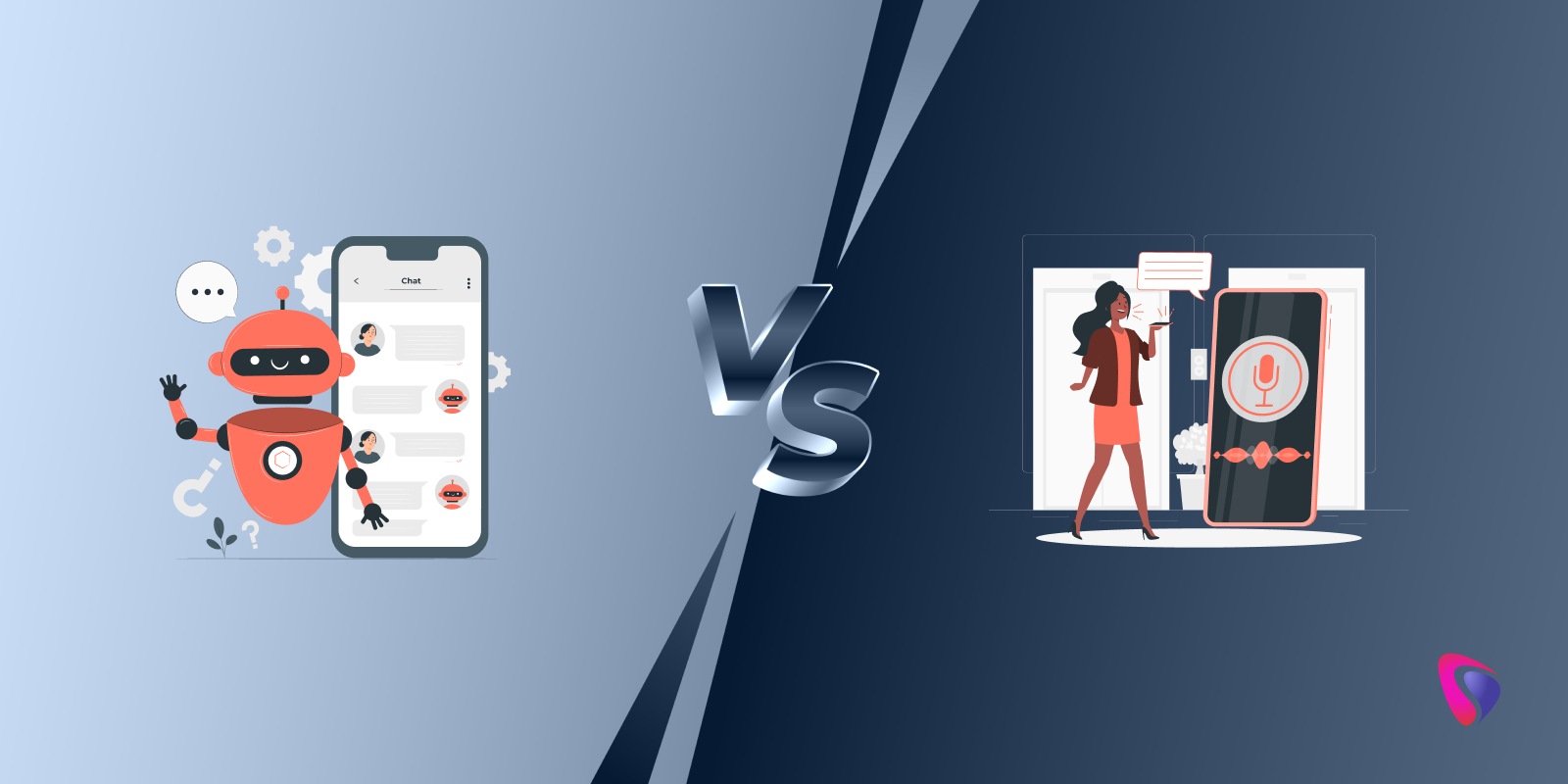
Here we are in 2025, and the digital marketing sector is already undergoing a major transformation, redefined by AI, hyper-personalization, and data analytics. With the landscape changing so rapidly, companies must pull up their socks and adapt to the latest trends and technologies to stay ahead. Right now, the following trends are the primary drivers for 2025.
- AI is in experimental mode, not used for complete automation.
- Key focus on third-party data collection.
- Short-form videos dominate engagement.
- SEO focuses on long-form content.
- Data privacy compliance is a challenge.
The global value of the digital marketing sector is projected to reach $1.3 trillion by 2033. The future seems bright, but not everyone will get a share of this pie. Only 61% of companies believe that their digital marketing strategies are effective. No one likes to fail. Yet, if we turn a blind eye to our present flaws and fail to plan for the future, we are just asking for trouble.
As we find ourselves in the middle of 2025, digital marketing companies are already feeling the pressure to brace for the challenges that 2026 has in store. Time machines are not a thing. So, how do we know what’s in store for 2026? Fortunately for us, some experts have given us a hint of what’s in store for the next year. We know you guys are curious. Without wasting more time, let’s get started.
Top 9 Trends for the Digital Marketing Sector in 2026
The digital landscape changes constantly. Personalization is an integral part of digital marketing campaigns, but they only consider broad audience segments. Google’s algorithm pushes detailed and informative content, but voice-powered searches are not that popular. Brands use influencers to promote their products, but not all are successful in achieving the desired ROI. A lot is set to change in 2026. What worked in 2025 may not cut it in 2026.
Staying ahead of trends and preparing for what’s next can unlock new opportunities and ensure that your business stays competitive. Below are some of the top predictions for the digital marketing sector in 2026.
1. New Face of Search - Rise of AI Tools
People don’t search for information online as they did in the past. For example, it is uncommon for people to search for - Best popular tool for mobile app testing in 2025. On the flip side, people are leaning towards AI models like ChatGPT and Gemini to ask questions that come across as more human-like.
An example of a question in natural, human-like language is: Which mobile app testing tool stands out as the top choice for 2026, especially for seamless integration with platforms such as Jira or Asana in 2026? Such detailed prompts get in-depth answers, unlike the vague links on Google and other search engines. These answers serve their purpose and are changing the face of digital marketing.
Keywords Alone Will Not Suffice
We’ve been hearing this for over 15 years: Insert the right keywords at the right density, and the results will follow. This probably worked five years ago, but things have changed since the advent of AI tools. These tools not only look for keywords, but they also analyze the meaning and context. What do AI tools consider while analyzing content? They are looking for the following-
- How deeply the writer explains the topic.
- Is the content well-organized?
- Can readers find, understand, and use the content?
- Clarity and tone of the content
- Does the content answer real-life questions?
Producing AI-Friendly Content
Whether it's blogs, website content, case studies, or articles, the content should be clean, semantic, easily summarizable, and interpretable by LLMs (large language models). How should companies develop such content? The following tips might help.
- Use a natural and conversational style to write content.
- Create FAQ sections, user guides, comparisons, and glossaries.
- Use clear headings, structured layouts, and internal links.
- Group related topics into content hubs (also called topic clusters).
Aim to Educate, Not Marketing Your Offerings
AI tools push and promote content that educates readers. Creating well-structured, educational content that helps people or answers questions is the key. Some key pointers to create educational content include the following-
- Content on the page must explain the topic from start to finish.
- Will the content enable informed decision-making or problem-solving?
- Is the AI tool capable of quoting or summarizing content efficiently?
If your answers to the above questions are yes, congratulations, you’re heading down the right path.
2. Goodbye Google Search - Enter ChatGPT and LLM Search
For over 10 years, ranking on the first page of Google was a dream come true for companies. Not anymore. Gear up for some major changes in 2026.
In 2026, people are likely to stop searching directly on Google. The reason is simple. Google mainly serves as a gateway, directing users to various sources available online. When people want answers to specific questions, they ask ChatGPT, Siri, or Gemini for answers. Instead of providing a list of blog pages, websites, and other sources, the AI tools will provide answers based on trustworthy sources.
How to Gain AI’s Trust?
Unlike the old days, SEO and backlinks won't be enough. To ensure that AI trusts your brand, you need to build authority. What is the key to building authority?
- Create detailed, meaningful content related to your industry/niche market. It should benefit the readers/viewers.
- Update the content often so that it stays relevant over time.
- Leverage technical tools like schema markup to help AI understand your content, context, and other details.
Reputation Matters in the AI World
Think of it as SEO. Google relies on SEO to build online authority and trust. On the other hand, AI learns from content that you actively post online. Greater visibility coupled with meaningful content equates to trust in AI’s eyes.
New Metrics for New Tools
Tracking engagement, traffic, and performance using Google Analytics will become a thing of the past. Marketers will track other metrics in 2026, including the following-
- The frequency/number of mentions of the brand on AI tools.
- Does GPT recommend/suggest your product?
- Does your brand feature in Bing Copilot answers?
- How do Siri or Alexa respond to questions relevant to your industry?
As AI tools are quickly becoming powerful content discovery tools, AI tools mentioning a brand’s name can have positive consequences. It can influence customers’ buying decisions, boost brand authority, and leave digital footprints across the web.
3. Talk to Siri - It Listens
Apple launches new iPhones every year, but something incredible happened in 2025. New devices are redefining people’s search patterns. With AI driving Siri, there is no need for people to type their questions into a browser anymore. They simply need to speak and voila!, the answers will come to them.
What Does AI-First, Voice-Powered Chat Mean for Businesses?
As mentioned in one of the sections above, it's not enough if your online content is detailed, meaningful, and trending. AI tools must also highlight your content and feature it in their answers. How do companies make that happen? To ensure that the content features in AI’s answers, it should meet the following criteria.
- Sound Natural - Like the way normal people hold conversations.
- Clear Answers - No beating around the bush. Direct answers to the questions.
- Think Beyond Keywords - Focus on crafting meaningful content rather than just cramming in keywords. AI tends to favor content that genuinely adds value and adds value over that that simply repeats keywords and matches phrases exactly.
When writing blog posts, FAQs, and website content, try to break the information into smaller, more digestible chunks. Examples of such content include the following-
- Bullet Points
- Pull Quotes
- Subheadings
- Short Videos or Images
Such byte-sized content is easy to understand for AI and people while boosting engagement at the same time.
Increased Focus on First-Party Data
As Apple focuses more on on-device AI, third-party data sharing will take a backseat. What does that mean for businesses?
- Your business will need more first-party data. This data includes emails, CRM info, and customer insights.
- Building direct customer relationships will become more important than before.
4. Bot Domination is a Reality
Bots running the internet is not a futuristic concept; it is happening now and will become a formidable force in 2026. Most people think of bots as a nuisance, which is true, as spammers and hackers use bots. That said, there are useful bots like search engines and AI crawlers. Like it or not, bots are a part of our lives now, and they are filling the internet.
What do bots do? Bots don’t just visit websites. They perform many actions such as the following-
- Read and understand the content that brands post.
- Conducts an exhaustive analysis of the code.
- Compare product prices.
- Use AI to write content related to the business.
How to Get Bots’ Attention?
Needless to say, if the bots find your content, it pushes your business into the limelight. Getting the attention of bots requires a company to fulfill the following conditions.
- Ensure a fast-loading website.
- Make the website mobile-friendly.
- Building with clean and simple code.
- Structured with schema markup and XML sitemaps.
Messy code and slow pages are red flags that make the bots ignore or misrepresent your content. Either way, the content will not get the much-needed visibility or reach the target audience.
Bots Turn Content Creators
Presently, bots don the content creation cap. They write full-fledged product reviews, guides, and content in a structured format using bullet points. Where do AI bots get their content from? They get it from the content posted on websites like yours. This content can be web pages, blogs, articles, and others.
Having said that, the content you post must be well-structured and unique while offering value to readers. Plagiarized, rehashed, and directionless content will be given the cold shoulder. It will shift the focus to other companies in the same industry as yours.
If you don’t act, your competitors will take a bigger slice of the pie. So, it's essential to put original content that not only provides value but also resonates with the audience.
Originality is Key
Bots can generate content, but if your content has a unique take on a topic or a subject, it can’t replicate the same. To achieve success in 2026, your business must create content that is hard to copy or imitate. Examples of such content include the following-
- Proprietary Insights
- Exclusive Interviews
- Real-Life Case Studies
- Original Research
Not just people, even AI tools would trust such content.
Constant Bot Tracking
Tracking bots is a must. You need to know which bots visit your site and what they do. With bot monitoring and detection tools such as DataDome, Distil Networks, Botify, Google Search Console, Kasada, and Cloudflare, you can manage these bots and perform the following actions-
- Improve the SEO strategy.
- Stop harmful scrapers.
- Stay a step ahead of the internet.
With bot tracking, your business can understand how a new bot uses content. It also offers valuable insights that can help you fine-tune your strategies. By analyzing the information the bot gathers, you can come up with new content creation strategies.
5. Dominate AI Searches With LLM SEO
Google rankings are no longer the gold standard for online visibility. The digital marketing landscape is always changing, and companies must consider how they appear in searches, particularly on AI platforms like ChatGPT, Gemini, or Perplexity. Unlike search engines that provide links in response to searches, AI tools answer the question directly. This is where LLM SEO enters the scene.
Importance of LLM SEO for Companies
Google, Bing, and Yahoo search were the main entry points to information back in the day. People ask questions like the following-
- How do I measure the ROI of influencer campaigns?
- What is the best accounting software for early startups?
- What is the best platform to launch a nice D2C brand?
- How do I train a custom GPT model for customer support?
- How do I incorporate ESG into brand storytelling?
It doesn’t matter how good your product or content is. What matters is that the content must be optimized for these new-age AI tools. Follow the steps below to get noticed by AI.
1. Add Structure to Your Content
Language learning Models need help to understand the content you publish. Use tools like Schema.org for labelling:
- Who wrote the content?
- What’s the product/service and its benefits?
- Customer reviews
- FAQs
The metadata works as an interpreter between your company’s website and the AI tools. This helps the AI tool understand your content and recommend it to people. In the absence of metadata, your content may be misinterpreted or ignored.
2. Use Semantic SEO
Gone are the days when flashy titles like - Top Payment Gateways for E-Commerce in 2026 worked. AI tools do not give importance to such attention-grabbing, flashy titles. What does AI want? They want the following-
- Detailed content about setup, integration, challenges, use cases, and new trends.
- Interlinked pages that build a clear knowledge map.
- A content ecosystem that has authority in a particular niche or industry.
If your business fulfils the above criteria, it will gain AI’s trust.
3. Highlight Your Credibility
AI and ML tools recommend and promote content from reliable sources. Build trust and authority by:
- Adding author bios with credentials.
- Include citations and data.
- Share client testimonials.
- Stay active on social media and networking platforms, or blog platforms.
While LLMs do not follow Google’s E-E-A-T framework, they still focus on content from trustworthy sources. That is why it is important to establish your credibility over time with detailed, informative, and original content.
4. Human Touch is Key
Large language models favor long-form content, but that doesn’t mean you can write blocks of lengthy content with no structure. To ensure your content is easy to read and comprehend for people, it should be well-organized with bullet points and clearly defined sections. Below are some tips.
- Headings such as H2, H3, H4 and more
- Use bullet points
- Bold text for valuable insights
- Embedded media like images, videos, flowcharts, and interactive elements like polls.
Clear, scannable, and informative content will get AI’s attention. Eventually, AI will promote such content and recommend your website/product to users. Using trending keywords will only work to a certain degree; content reigns supreme.
6. Become Future-Proof With CRM
In 2026, marketing is set to focus heavily on personalization, automation, and making informed decisions. A strong CRM serves as a potent tool to enhance your sales and marketing strategies. Presently, CRM systems are being used primarily for organizing contact lists, sales pipelines, and email automation.
By 2026, CRMs will turn into potent decision-making tools to facilitate real-time personalization, automation, and strategy making. The most important changes include the following -
- Predictive Behavioral Modeling
- Autonomous Campaigns
- Real-Time Personalization At Scale
- Deep Integration with AI Agents
Crucial Role of CRM
Navigating the customer journey is no easy feat due to the complexities of omnichannel experiences, fragmented data, and the ever-evolving expectations of customers. Imagine what the customer journey would look like in 2025-26.
- Potential customer sees your ad on May 1st
- Uses voice search to find your website on 2nd May
- Download a free guide/tutorial on May 3rd
- Follow your Instagram account and send a message on 4th May
An advanced CRM with AI-integration, predictive analysis, and an emphasis on personalized experiences can do wonders for your business. Not only will it connect different touchpoints, but it will also predict customer behavior, handle their queries, and automate tasks. What would happen without a CRM? This can result in blunders like the following-
- Target the same users repeatedly with the wrong messaging.
- The customer service team may be unaware of users who clicked on product ads.
- Users may abandon a cart while making purchases on their smartphones. A website optimized for large devices may not recognize the action.
- The email campaign may not consider the user’s recent purchase.
Benefits of a New-Age CRM for Your Business
- Monitors all interactions across multiple touchpoints (from the first click to the last purchase).
- Take the hassle out of follow-ups by automating them through email, text messages, and ads.
- Use predictive analytics to pinpoint the leads that are most likely to turn into customers.
- Target interested users with personalized content.
Gone are the days when a CRM was merely an address book. A modern CRM holds the key to marketing success. It divides audiences into distinct categories according to their responses, demographics, purchasing power, and other relevant factors. Armed with extensive, refined data, your company can execute targeted campaigns and evaluate ROI with precision.
CRM systems come equipped with audit logs, consent management tools, data residency options, localization, and cookie and tracking management. These tools help ensure compliance with GDPR and CPRA, keeping customer data safe and reducing the chances of penalties.
7. Kickstart Explosive Growth With Social Media
Social media goes beyond being a mere tool for going viral or improving brand visibility. It's all about increasing conversions, attracting new customers, and ensuring existing ones stay happy. Whether it's about making a formidable first impression or closing the deal, social media content can be a real game-changer for companies.
To grab the attention of customers, brands are showcasing their products on products on Instagram, Facebook, and various other platforms. Customers engage with reels and informative videos, which ends up in them making a purchase.
What’s going to change in 2026?
When people see a brand on social media repeatedly, they form an opinion. Be it long videos, image carousels, or reels, it leaves an impression on people. However, this process must be organic. Examples of this include the following-
- LinkedIn post by a CMO about verticals within an industry.
- Rapid Q&A session on TikTok addressing myths about a particular product.
- Instagram reel highlighting a product’s journey from ideation to launch.
With every action on social media, you gain customer trust. Thanks to AI tools, brands can create engaging and impactful content with great speed. Not just image and video creation, AI tools can also write captions and generate subtitles for videos. What truly matters is the human touch.
Even while using AI, you must ensure that your content forms an emotional bond with customers. The tone, values, and brand voice must reflect originality. This approach fosters loyalty and engagement.
Tips for Social Media Success in 2026
- Short-Form Videos - Still reigns supreme. Customer videos, educational/instructional videos, and real-life content that people can relate to.
- Carousels and Infographics - Such interactive content can grab customer attention on LinkedIn, especially if you provide smart tips or interesting stats.
- Live Content - Virtual events, products, and AMAs help foster a deeper connection with the audience.
- AI Listening Tools - These tools help companies spot trends, answer questions, and stay ahead of the curve.
More than simply a means to get noticed, social media serves as a robust tool to expand your audience, cultivate loyalty and earn trust, all while driving sales. It's important to remember that this is not a shortcut to instant success. The journey begins with data collection, trust building, and the revenue will gradually follow.
8. Long-Term Value Matters: Not Temporary Hype
Traditional marketing adopts a linear campaign model. In this model, companies plan the campaign, launch it, and run it, followed by generating reports. This model no longer works because customer buying is no longer linear or predictable. Gaining data insights took weeks to months.
Fast forward to 2025, and the marketing scene is buzzing with life, driven by data, and shaped by customer preferences. Today’s customers crave immediate responses and personalized content throughout their entire experience.
What Will Companies Need in 2026?
Come 2026, companies will require a marketing system that harnesses automation, responds to user interactions instantly, and runs 24/7 without hiccups.
What does this model look like?
- Grab customer attention with engaging content that solves real-life problems while building trust.
- CRM tools track your audience, their actions, and requirements.
- Personalized interactions with AI. This ensures every customer journey is unique.
- Automation works 24/7, converting leads to customers outside working hours.
- With sales tools, your sales team can follow up quickly with targeted messaging.
Sending out a flood of emails won’t necessarily boost your conversions. What matters is connecting with customers, understanding their problems, and nurturing those relationships. That is the key to succeeding in 2026. With a solid marketing system in place, your business can truly make it happen.
The best part is that you don’t have to start from zero every time. Set it up the first time, monitor, optimize, and then scale as your audience grows and evolves.
Ditch the traditional campaign mindset and adopt the market system approach. This approach will set the stage for adaptability and long-term growth.
9. Include AI in Your Arsenal
Many businesses are under the impression that AI hampers creativity, but in reality, it does quite the opposite. When harnessed effectively, AI can unleash fresh waves of creativity. Presently, companies use AI for the following activities.
Writing and Editing
Employees can use AI to write the first draft, be it blogs, emails, ad copies, or other content. Then, employees with specialized skills refine the content to match the brand’s voice and vision.
Creative Testing
Want to experiment with ad copies to see which works best? AI can whip up a variety of headlines, calls to action, and even images. You can run A/B tests to find out which option performs the best.
Smarter Targeting
With AI, you can identify the choicest leads, potential customers who are likely to convert, and those who will discontinue their association with you. Perform smarter targeting with these insights.
Instant Insights
Sifting through vast volumes of data is time-consuming and may not yield results in time. AI generates instant reports to highlight what’s effective and suggests the next course of action.
Optimized workflows
From training new employees, drafting SOPs, or summarizing sales calls, AI boosts productivity by expediting these tasks. This optimizes workflows and promotes better teamwork.
That said, tools don’t guarantee success. The roadmap to success requires-
- Teams that can understand and use AI to its fullest potential.
- Build a culture that encourages testing and learning.
- Create a system where human intellect and reasoning have the upper hand.
What should a company do to achieve the above objectives?
- Train teams to use AI.
- Create playbooks to ensure successful outcomes in specific cases or business processes.
- Review and audit regularly to remain on the right course.
AI boosting marketing efforts is a small win. Boosting overall team productivity is the real victory.
Wrapping Up..
2026 may be a few months away, but we are already being ushered into a new era. The revolution is happening right in front of us as companies gravitate from traditional keyword stuffing to developing meaningful, useful content that resonates with readers while getting a thumbs up from LLM search agents.
In the face of ever-evolving privacy regulations, collecting, controlling, and managing first-party data is no longer an option. It becomes a necessity to build long-term customer relationships while advertisers are having second thoughts about putting their money into opaque platforms such as Google, Meta, and Amazon. This is because such platforms have tightly controlled ecosystems where companies have limited control over data, plus they are at the mercy of their algorithms.
Companies that understand future challenges and AI’s capabilities will ditch the old strategies. Such companies don’t see AI as a challenge; they see it as a creative partner. Additionally, these companies think about how customers search and publish content accordingly while owning customer data. They will also refine their strategies to meet the ever-changing industry demands and AI landscape.
Are you ready to embrace the new AI trends for 2026? If this sounds like too much work, Hyperlink InfoSystem can guide you. We are not just a regular app development company because we dabble in cutting-edge technologies like AI, machine learning, IoT, edge computing, and blockchain. This knowledge and expertise help us create custom solutions for companies. Speak with one of our experts to learn what we can do for you.
Schedule a Consultation Today!
FAQs
1. What role will SEO play if search engines lose their importance?
SEO will not vanish; it will have a new face. Companies will have to tweak their content creation and other strategies to align with new AI recommendations, voice-powered search, and content metadata. Traditional SEO rankings will become outdated.
2. Will chatbots and conversational AI replace websites?
Websites will remain crucial in 2026, but customers will change their pattern of searching for information. Instead of using text, they will use voice assistants or chatbots to get precise information. In short, the new tools will complement websites and not replace them.
3. How will companies measure ROI in 2026?
Clicks and impressions will matter, but not as much as they did a few years ago. Conversational engagement, AI-driven conversions, subscription capture, and first-party engagement metrics will be the yardsticks to measure ROI in 2026.
4. Will video content remain relevant?
The answer is yet. When integrated into AI workflows, such as auto-generated reels or image-driven storytelling, video content will play an instrumental role.
5. How can small and emerging businesses compete in this emerging landscape?
Small and emerging businesses don’t have to be disheartened. They can compete with the big shots in this AI-dominated landscape by following the steps below-
- Focus on nice AI-integrated content.
- Leveraging first-party data.
- Engage directly using company-owned channels like email or text messages.


















